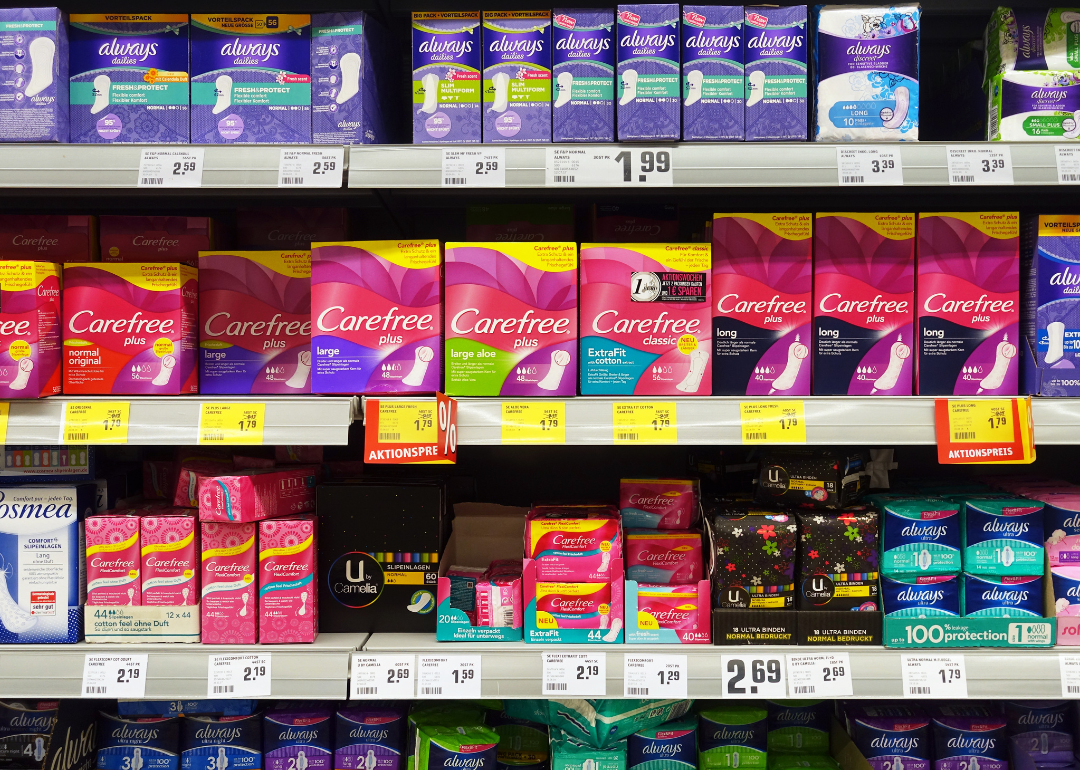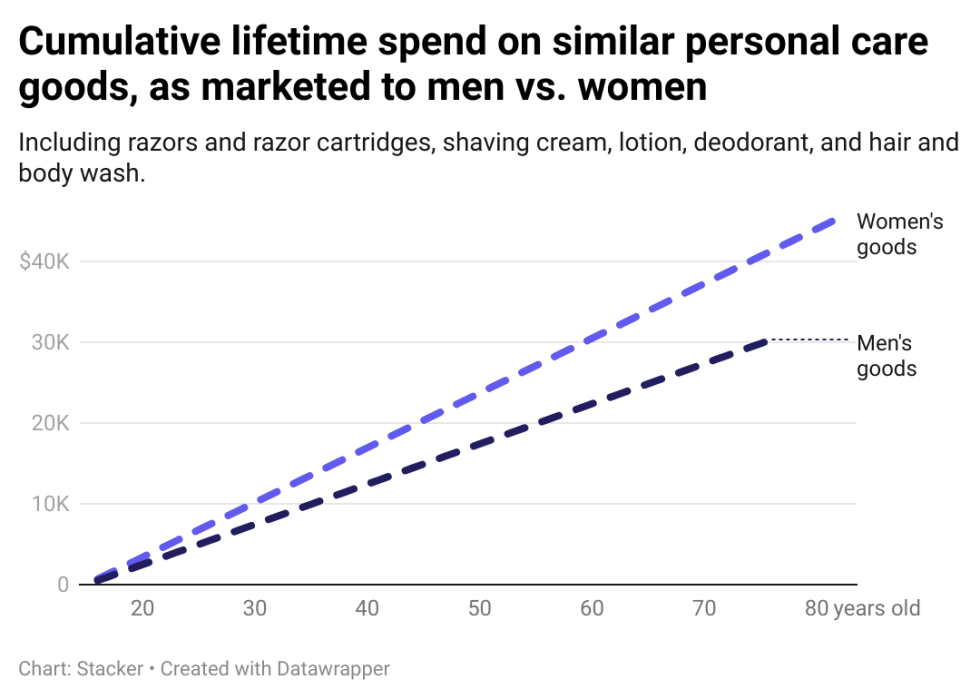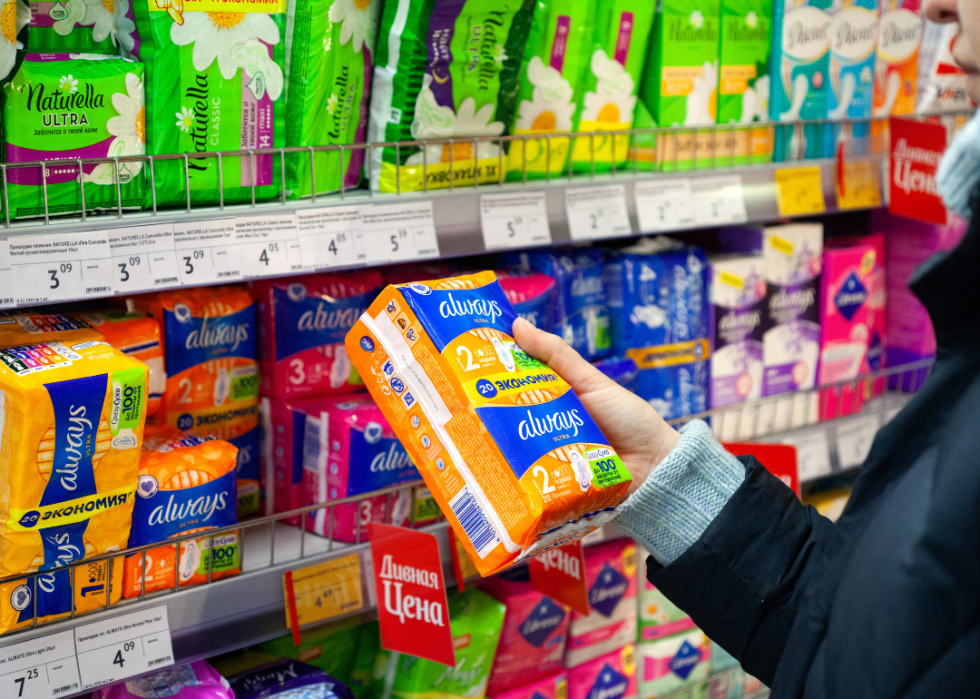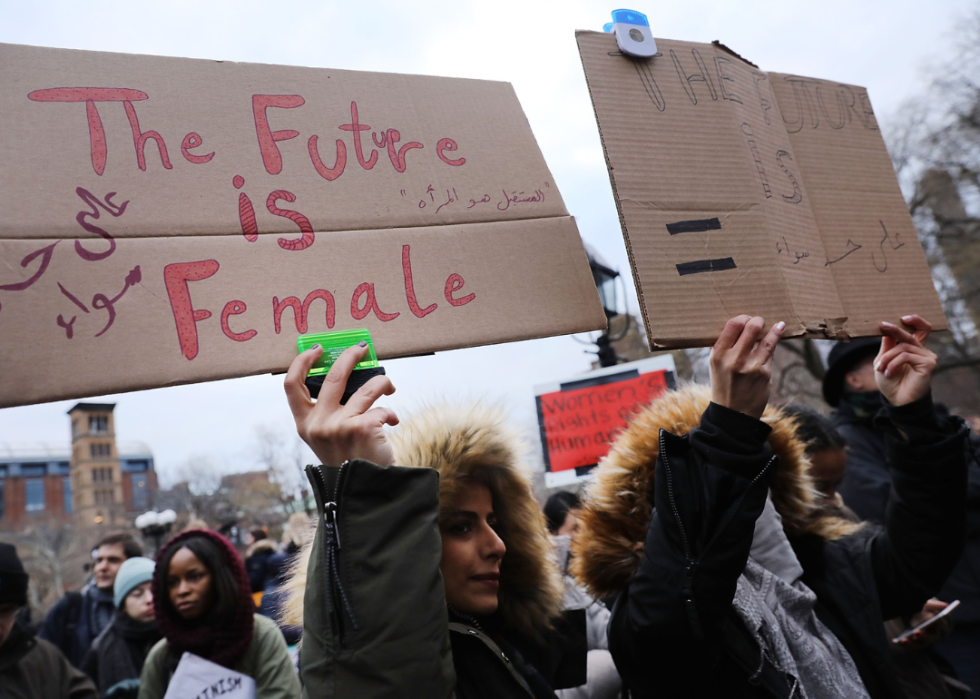
What is the 'pink tax' and how is it impacting women?
The pink tax, though not an actual tax, refers to a gender-based pricing system that singles out products and services marketed to women. Stacker explored how the pink tax impacts women across the nation.
Personal care products such as body wash, shampoo, lotion, and deodorant cost women close to 13% more than products geared toward men, according to data collected in March 2022 by The Balance. Even razors marketed toward women were more costly by 9%. Oftentimes, the packaging or product is pink in color, hence the name "pink tax."
In the U.S., many items considered essential goods—from groceries to medications—are exempt from sales tax. Other items, deemed nonessential, are taxed as luxury items. More than 20 states apply such a tax to feminine hygiene products. A growing number of lawmakers have advocated eliminating the so-called pink tax on gendered products.
Katie Edwards-Walpole, a former member of the Florida House of Representatives, was one of the co-sponsors of a tampon tax repeal bill in Florida, which passed the state's legislature in 2017.
"I was serving as a state rep for Florida and began receiving emails with the subject line, 'Periods are taxing enough,'" Walpole told Stacker.
"Me being a 30-something-year-old female lawmaker, I didn't mind putting my name behind the bill. I worked with a Republican to file the legislation. Through that bill, other people began reaching out and said it helped with affordability," Walpole said.
Amid soaring prices due to the current inflation, women are certainly feeling the impact of the pink tax. Gender-biased pricing has been going on for years. Back in 1995, California became the first state to pass the Gender Tax Repeal Act of 1995.
This came after California's Assembly Office of Research discovered in 1994 that women were charged $2 more to dry clean their blouses than men for shirts. The study also showed department stores required women to pay for alterations made to their business suits while men's suits were often altered free of charge.
In 2015, a study called "From Cradle to Cane: The Cost of Being a Female Consumer" explored gender pricing in New York City. One of the major findings was women pay, on average, $1,351 more than men in a "gender tax" for the same services.
Read on to learn how the pink tax impacts women in America.

Women spend significantly more on personal care goods in their lifetime
In the 2015 study, “From Cradle to Cane: The Cost of Being a Female Consumer,” researchers analyzed the costs of several hundred products and found women spent more on items not limited to razors or shampoo. In fact, baby clothes for girls cost more than baby clothes for boys. Toys marketed toward girls also cost more than toys for boys, even if the toys were the same but in different colors.
This theme of women paying more for items remained even in old age. Canes cost 12% more for women and so did adult diapers. Women practically pay more for every product over the course of their lives, from baby clothes to health care and personal care products.

Meanwhile, 24 states still tax menstrual care items as luxury goods
Feminine hygiene products are still labeled luxury items—hence the term “tampon tax.”
Iowa in May 2022 became the most recent state to eliminate the tampon sales tax; 24 states still tax menstrual care items as luxuries. Other countries around the world have stopped taxing menstrual products, led by Kenya and followed by Canada, India, and Australia.

The gender wage gap exacerbates the issue
American women who work full time are paid 83 cents for every dollar men make, according to the American Association of University Women. This disparity has affected women throughout their lives (especially women of color), from the start of their careers through retirement. As a result of having a lower income than men over the course of their lifetime, women also receive less in Social Security and pensions.
With lower earnings and higher spending on personal care products, women are likely to pay significantly more over their lifetimes for the same products as men.

Women live longer than men on average, meaning they spend even more
The gender wage gap earns women less money on the dollar, while the pink tax charges women more for the same products. These numbers are exacerbated by the fact women also live longer than men on average.
Although research has shown women consistently experience higher levels of stress than men, more anxiety, social inequality, and less pay, data shows the life expectancy for American women is 80.5 years and 75 years for men—meaning women are being paid less and charged more.

There is significant legislation underway against gender bias in pricing
Rep. Jackie Speier in June 2021 reintroduced the Pink Tax Repeal Act, which "prohibits the sale of similar goods or services that are priced differently based on gender."
Since reintroducing the discussions, several states have launched efforts to eliminate gender-based taxes. Twenty-four states have ended luxury taxes on menstrual care items. New York City, Miami Dade County in Florida, and California prohibit gender-based pricing in services such as dry cleaning or hair care. However, these jurisdictions may charge higher rates if the service requires more time, difficulty, or cost.



